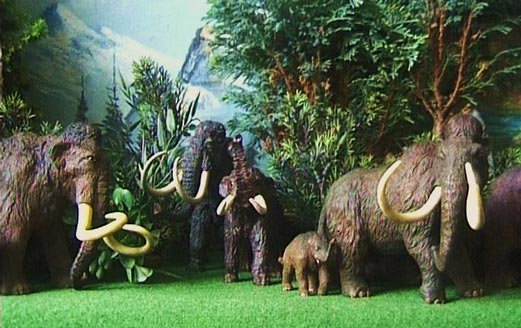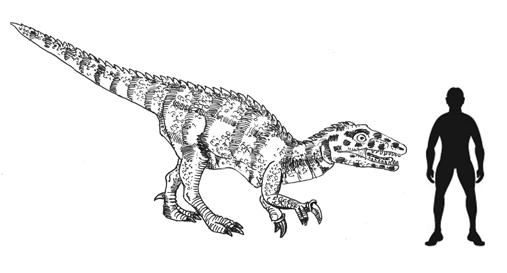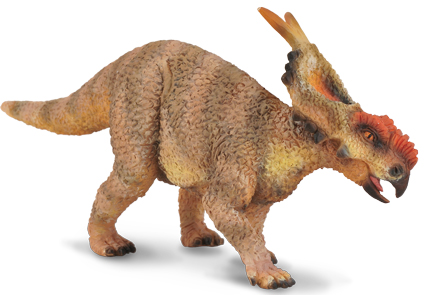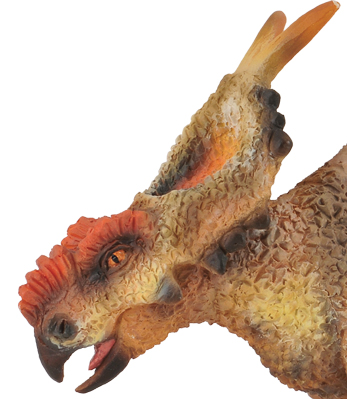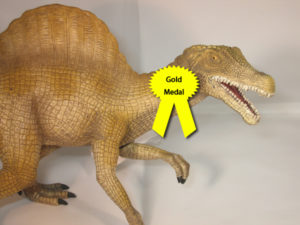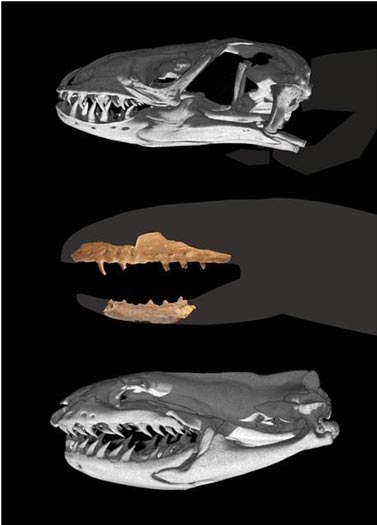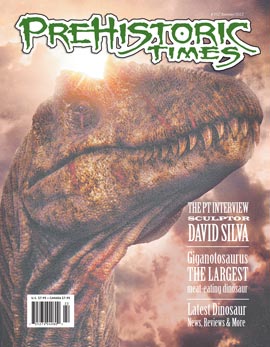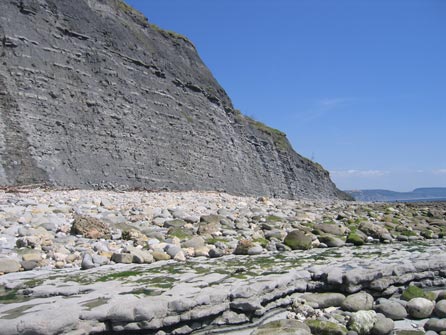Depicting a Herd of Woolly Mammoths using Prehistoric Animal Models (Exclusive Images)
Using Mammoth Models to Make a Realistic Herd
Dinosaur model fans and model collectors are able to create a number of exciting scenes using various different scale models of dinosaurs. The scale sizes of the models can vary considerably and from our perspective, the wider range of scale models available gives a model maker more freedom in terms of the scenes they can create. Interestingly, when it comes to Ice Age mammals such as Woolly Mammoths, there are a number of good quality models around, but the majority of these tend to be the same scale – 1:20. Creating a realistic-looking scene using Woolly Mammoth models takes considerable care and judgement.
Woolly Mammoths are members of the elephant family (Elephantidae), they lived in herds just like their extant cousins the African and Indian elephants of today. Palaeontologists believe that the herd structure of Woolly Mammoths such as Mammuthus primigenius, was the same as that seen in living species of elephants. A matriarch would control the herd which would be comprised of her daughters, sisters and their young. Bulls very probably lived a solitary existence when fully mature. Young males would be driven from the herd by the matriarch when they reached maturity and breeding age. These young males would probably live in small groups made up of other males of similar age (bachelor herds). Bulls would compete for the right to mate with the females and the herds would probably have moved great distances each season in search of fresh grazing.
Recreating a prehistoric scene featuring a herd of Woolly Mammoths is quite tricky. The herd would be comprised of a number of individuals and there would be considerable size and age difference between herd members. The animals would range in size from calves that has been born that year to the older females who might well be sisters of the dominant matriarch. The matriarch herself could be more than fifty years of age.
A Prehistoric Scene – A Herd of Mammoths
Picture credit: Alan Whitehouse
The above scene has been created by the highly talented Alan Whitehouse – a stunning diorama.
It is not just the size of the models that the scene designer has to get right, but the coats of these animals would all differ. Scientists studying the frozen hairs preserved on the remains of Siberian mammoths which are found thawing out of the permafrost in the most northerly parts of Russia, know that there was considerable variation in mammoth coat colour.
The coat consisted of two distinct layers. A “shaggy” topcoat with an undercoat of denser hair for insulation. The coat could be coloured various shades of brown or reddish, perhaps bordering on ginger, to almost jet black. Albino mammoths were possible but these animals would have been unlikely to survive in the wild.
There are a number of accurate 1:20 scale or thereabouts replicas available. Creating a herd of Woolly Mammoths has been made easier with the introduction of the juvenile and baby Woolly Mammoths from the French manufacturer Papo earlier this year. When choosing a Woolly Mammoth replica it is helpful to remember that unlike modern elephants they had relatively short tails and small ears – both adaptations for a cold climate. Look out for these features on any mammoth model you might be interested in purchasing.
The tusks of these animals grew for as long as the animal lived. Both males and females had substantial tusks, just like us humans with our left or right hand bias, palaeontologists believe that Woolly Mammoths had a preference for using either their right or left tusk. Differences in the wear pattern seen on pairs of mammoth tusks recovered from individual specimens provides evidence to the scientists as to whether this particular animal was right-tusked or left-tusked. Tusk size would therefore have varied throughout the herd, it would have been dependent on the age of the individual animal. A number of Woolly Mammoth species and sub-species have been described, at least eight from the Americas alone. The tusks of Mammoths tended to curve outwards but there was considerable variation. The shape and size of the upper incisors (tusks) is just another issue for the model maker to concern themselves with.
The models can be presented against a painted backdrop or picture. Mammoths were creatures of the open plains, although a number of species are associated with more closed forested environments so the designer has considerable choice as to what background to use. A scene depicting early spring or late autumn, times in the year when Mammoth herds might have come together to form super-herds as these elephants made their annual migration to the best feeding grounds, might be appropriate. Posing the animals on artificial grass or using grass in the foreground is fine. The models stand up well on this medium and animals such as M. primigenius fed on grasses and small sedges (finely serrated teeth with dense plates, indicate a grazing diet as does stomach content analysis of frozen mammoths).
Although Woolly Mammoths have been depicted in cave art, no living person has seen a mammoth herd. In fact, no one has seen the Woolly Mammoth for thousands of years, so model makers and designers can use their imaginations based around some scientific principles to guide them as to what sort of scene they would like to create.
To view the range of prehistoric mammal models, including Woolly Mammoths available from Everything Dinosaur: Prehistoric Mammal Models and Figures.


